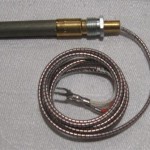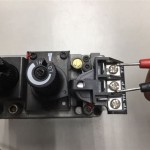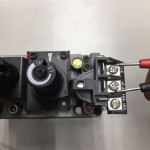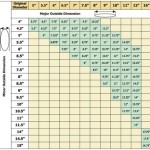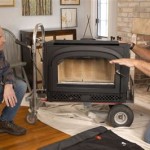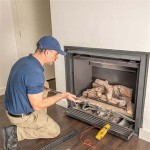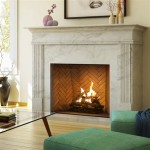How To Clean Soot Off a Brick Fireplace Surround
A brick fireplace surround adds character and warmth to a home. However, the accumulation of soot is an unavoidable consequence of regular fireplace use. Soot, a black, powdery substance composed primarily of carbon particles, adheres to the brick surface over time. If unaddressed, soot not only detracts from the aesthetic appeal of the fireplace but also poses potential health risks due to its inhalable particle matter. This article provides a comprehensive guide on how to effectively clean soot from a brick fireplace surround, outlining the necessary materials, preparation steps, and cleaning techniques to restore the brick to its original appearance.
Key Considerations Before Cleaning
Prior to commencing the soot removal process, several factors warrant careful consideration. These factors directly influence the effectiveness of the cleaning and the preservation of the brick surface. Understanding these considerations is essential for a successful outcome.
Type of Brick: Brick varies in porosity and composition. Knowing the type of brick is crucial because it dictates the appropriate cleaning solutions and methods to employ. For example, porous brick absorbs liquids more readily, necessitating gentler cleaning agents to prevent staining or damage. Older, more delicate brick may require specialized cleaning techniques to avoid erosion or crumbling. If unsure of the brick type, testing a cleaning solution in an inconspicuous area is recommended.
Age of Soot: Fresh soot is generally easier to remove than soot that has been accumulating for an extended period. Older soot tends to be more deeply ingrained into the brick's pores. Consequently, older soot may require more aggressive cleaning methods or multiple cleaning sessions to achieve satisfactory results. Regular cleaning prevents the buildup of stubborn soot layers.
Safety Precautions: Soot particles are potentially harmful when inhaled or ingested. Therefore, appropriate safety measures are indispensable. Wearing a dust mask or respirator protects the respiratory system from inhaling soot particles. Eye protection, such as safety glasses or goggles, shields the eyes from potential irritation. Gloves prevent direct contact with soot and cleaning solutions, protecting the skin from irritation or allergic reactions. Adequate ventilation is also crucial. Opening windows and doors or using a fan facilitates air circulation and reduces the concentration of airborne soot particles. Covering nearby furniture and flooring with drop cloths or plastic sheeting safeguards them from accidental splashes or spills during the cleaning process.
Materials and Tools
The effectiveness of soot removal depends not only on the cleaning technique but also on the use of appropriate materials and tools. Gathering the necessary supplies before starting the cleaning process streamlines the operation and ensures efficiency.
Dry Brush: A stiff-bristled brush, such as a scrub brush or masonry brush, is essential for removing loose soot and debris from the brick surface. Choose a brush with durable bristles that are capable of dislodging soot without scratching or damaging the brick. A brush with a long handle allows for easier access to hard-to-reach areas.
Vacuum Cleaner with Brush Attachment: A vacuum cleaner equipped with a brush attachment is used to collect the loose soot particles dislodged by the dry brush. This prevents the soot from becoming airborne and spreading to other areas of the room. A high-efficiency particulate air (HEPA) filter is recommended to trap even the smallest soot particles, improving air quality during the cleaning process.
Cleaning Solutions: Several cleaning solutions are effective for soot removal, each with its own advantages and disadvantages. Selecting the appropriate cleaning solution depends on the type of brick and the severity of the soot buildup.
* Dish Soap and Water: A mild solution of dish soap and water is a gentle and effective option for removing light soot. Mix a few drops of dish soap with warm water in a bucket. The soap helps to loosen the soot, making it easier to remove with a sponge or brush.
* Baking Soda Paste: Baking soda is a natural abrasive that can help to remove stubborn soot stains. Mix baking soda with water to form a thick paste. Apply the paste to the soot-stained areas and allow it to sit for several minutes before scrubbing and rinsing.
* Trisodium Phosphate (TSP): TSP is a powerful cleaning agent that is effective for removing heavy soot deposits. However, TSP is a strong chemical and should be used with caution. Always wear gloves and eye protection when using TSP, and follow the manufacturer's instructions carefully. TSP can be harmful to the environment, so dispose of it properly.
* Commercial Brick Cleaners: Several commercial brick cleaners are specifically formulated for removing soot and other stains from brick surfaces. These cleaners typically contain a blend of detergents, solvents, and acids that effectively break down soot and grime. Choose a cleaner that is specifically designed for the type of brick you are cleaning.
Sponges and Rags: Sponges and rags are used to apply cleaning solutions and to wipe away loosened soot and grime. Use soft, non-abrasive sponges and rags to avoid scratching the brick surface. Microfiber cloths are particularly effective for removing soot and leaving a clean, streak-free finish.
Buckets: Buckets are needed to hold cleaning solutions and rinse water. Use separate buckets for cleaning solution and rinse water to prevent contamination.
Spray Bottle: A spray bottle is useful for applying cleaning solutions to specific areas of the brick surface. This allows for targeted cleaning and prevents oversaturation. Spray bottles are particularly useful for applying cleaning solutions to vertical surfaces.
Screwdriver or Putty Knife (Optional): For crevices or heavily ingrained soot, a screwdriver or putty knife can be used to gently scrape away the soot. Exercise caution to avoid damaging the brick.
Step-by-Step Cleaning Process
The following steps outline a systematic approach to cleaning soot from a brick fireplace surround. Adhering to these steps ensures a thorough cleaning while minimizing the risk of damage to the brick.
Preparation: Begin by protecting the surrounding area. Cover the floor and any nearby furniture with drop cloths or plastic sheeting. This will prevent soot and cleaning solutions from staining or damaging these surfaces. Open windows and doors to provide adequate ventilation. Wear a dust mask or respirator, safety glasses, and gloves to protect yourself from the harmful effects of soot and cleaning solutions.
Dry Cleaning: Use a stiff-bristled brush to remove loose soot and debris from the brick surface. Brush in a downward motion to prevent soot from falling onto already cleaned areas. Pay particular attention to crevices and areas with heavy soot buildup. Vacuum the area with a vacuum cleaner equipped with a brush attachment to collect the loose soot particles. Dispose of the vacuum bag or empty the canister immediately after cleaning.
Wet Cleaning: Select the appropriate cleaning solution based on the type of brick and the severity of the soot buildup. If using dish soap and water, mix a few drops of dish soap with warm water in a bucket. If using baking soda paste, mix baking soda with water to form a thick paste. If using TSP, follow the manufacturer's instructions carefully. If using a commercial brick cleaner, read the product label and follow the directions. Apply the cleaning solution to the brick surface using a sponge or spray bottle. Allow the solution to sit for several minutes to loosen the soot. Scrub the brick surface with a sponge or brush, paying particular attention to stained areas. Rinse the brick surface with clean water to remove the cleaning solution and loosened soot. Repeat the wet cleaning process as necessary to remove stubborn soot stains. For heavily ingrained soot stains, consider using a baking soda paste or a commercial brick cleaner.
Drying: After rinsing the brick surface, allow it to air dry completely. This may take several hours or even overnight, depending on the humidity and temperature. Ensure adequate ventilation during the drying process to prevent the growth of mold or mildew. Avoid using a heat gun or other heat source to dry the brick, as this can cause cracking or damage.
Sealing (Optional): Once the brick is completely dry, consider applying a brick sealant to protect it from future soot buildup. A brick sealant creates a barrier that prevents soot from penetrating the brick's pores, making it easier to clean in the future. Choose a sealant that is specifically designed for use on brick fireplaces. Follow the manufacturer's instructions carefully when applying the sealant.
Maintenance: Regular cleaning is essential for preventing the buildup of soot and maintaining the appearance of the brick fireplace surround. Clean the fireplace surround at least once a year, or more frequently if the fireplace is used regularly. A quick wipe-down with a damp cloth can help to remove loose soot and prevent it from becoming ingrained over time. Consider using a fireplace screen to prevent sparks and embers from escaping the fireplace and causing soot buildup on the surround.
By following these steps and taking the necessary precautions, one can effectively clean soot off a brick fireplace surround and restore it to its original beauty, contributing to a healthier and more aesthetically pleasing living environment.

4 Ways To Clean Soot From Brick Wikihow

4 Ways To Clean Soot From Brick Wikihow

How To Clean Soot Off Brick Fireplaces Anew

How To Clean Fireplace Bricks Simple Practical Beautiful

How To Clean Fireplace Brick Soot Marks And Grime Hometalk
How To Clean The Soot Off Bricks On Interior Of A Fireplace Prior Painting Quora

How Fo I Remove Fireplace Soot Smoke Hometalk

Clean Soot Fireplace From Stone Furnace Oil Leaks Diesel Spills Gas Remediation

White Swan Properties Blo How To Clean Soot From Fireplace Brick

How To Clean Soot Off Bricks The Sparkle Gang
Related Posts


